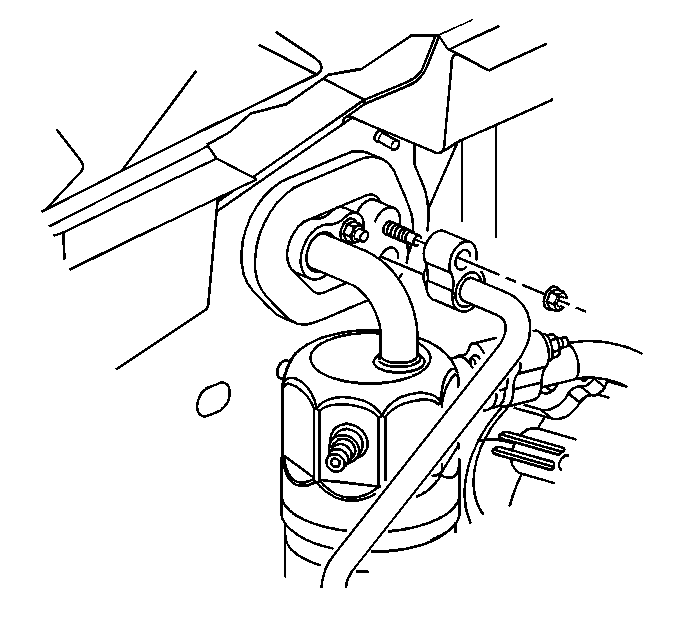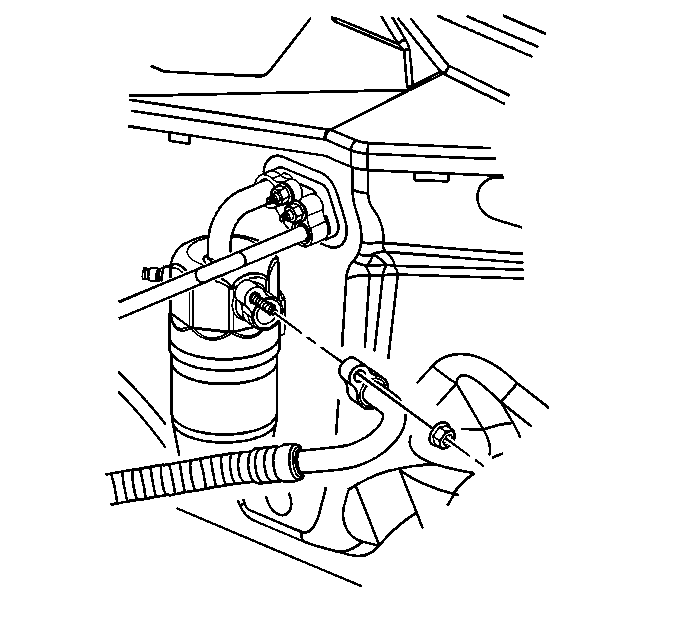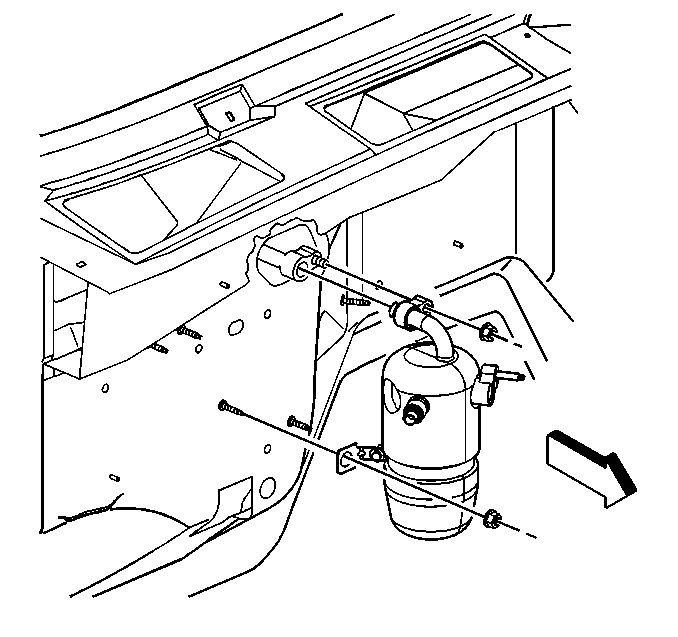Removal Procedure
- Recover the refrigerant. Refer toRefrigerant Recovery and Recharging .
- Disconnect the electrical connection at the pressure cycling switch.
- Disconnect the evaporator pipe at the evaporator.
- Disconnect the compressor/condenser hose at the accumulator.
- Remove the nut at the accumulator/evaporator connection.
- Remove the accumulator mounting bracket nut.
- Remove the accumulator.
- Discard all of the used sealing washers. Cap all openings.



Installation Procedure
- Install the accumulator using new sealing washers.
- Install the nut to the accumulator.
- Install the accumulator mounting bracket nut.
- Connect the evaporator pipe to the evaporator.
- Connect the compressor hose at the accumulator.
- Connect the electrical connection to the pressure cycling switch.
- Recharge the air conditioning system. Refer toRefrigerant Recovery and Recharging .
- Inspect the system for leaks. Refer to Leak Testing

Notice: Use the correct fastener in the correct location. Replacement fasteners must be the correct part number for that application. Fasteners requiring replacement or fasteners requiring the use of thread locking compound or sealant are identified in the service procedure. Do not use paints, lubricants, or corrosion inhibitors on fasteners or fastener joint surfaces unless specified. These coatings affect fastener torque and joint clamping force and may damage the fastener. Use the correct tightening sequence and specifications when installing fasteners in order to avoid damage to parts and systems.
Tighten
Tighten the nut to 16 N·m (12 lb ft).
Tighten
Tighten the nut to 9 N·m (80 lb in).

Tighten
Tighten the nut to 16 N·m (12 lb ft).

Tighten
Tighten the nut to 16 N·m (12 lb ft).
